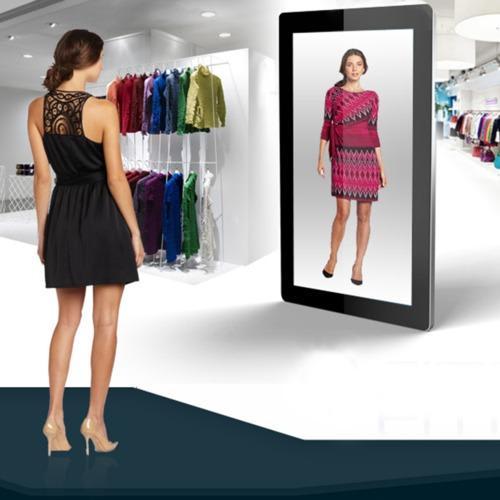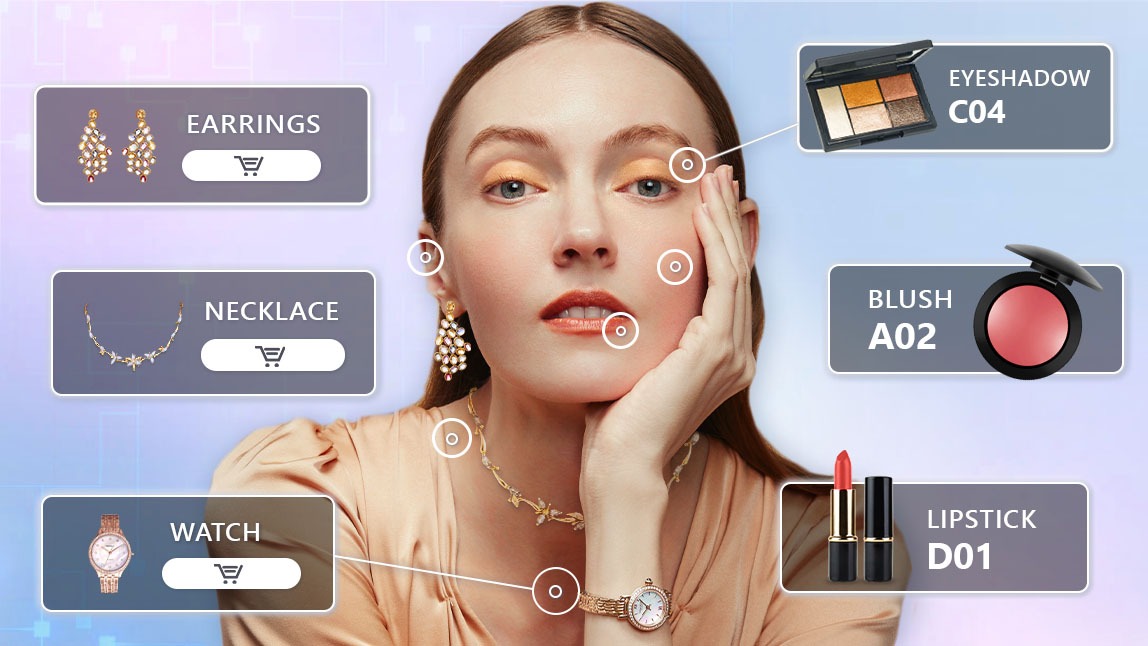
Revolutionizing Shopping: How Augmented Reality is Transforming E-Commerce
The e-commerce landscape is rapidly evolving, with Augmented Reality (AR) at the forefront of innovation. AR allows users to interact with products in virtual environments before making purchases, bridging the gap between physical retail and digital shopping. This technology is transforming the customer journey, providing immersive experiences that enhance decision-making, engagement, and satisfaction.
1. The Rise of Augmented Reality in E-Commerce
The Growth of AR in E-Commerce:
AR technology is becoming more accessible, and retailers are adopting it at an accelerating pace. Global market reports show an exponential increase in AR-based applications across industries, particularly in retail, where AR is driving customer engagement and sales.
How AR Works in E-Commerce:
Through AR-enabled apps or web platforms, consumers can view products as 3D models, place virtual furniture in their homes, or even try on clothes using AR mirrors. This enhances the shopping experience by providing a better understanding of the product’s size, fit, and aesthetic.
What is Augmented Reality (AR)?
AR blends digital content with the real world, enhancing the user’s environment with virtual elements. In e-commerce, AR enables consumers to interact with products virtually, using their smartphones or tablets to visualize items in their own space.
2. Enhancing Customer Experience with AR
Visualization of Products:
One of the most significant advantages of AR in e-commerce is the ability to visualize products in real-time. AR allows consumers to see how a product will look or function in their environment, which eliminates uncertainty during the purchase decision.
Try Before You Buy:
AR gives shoppers the option to "try" products before purchasing. For example, AR-powered beauty apps let users try on different shades of makeup or see how a piece of clothing fits their body. Similarly, eyewear brands allow users to virtually try on glasses.
Boosting Confidence in Online Purchases:
By providing a more interactive experience, AR reduces the hesitation many shoppers feel when buying online. Since customers can see how a product looks or works in their space or on their body, it improves confidence in their purchase decisions, which can reduce return rates.
3. AR's Role in Product Customization and Personalization
Product Customization with AR:
AR allows users to customize products in real-time, visualizing changes before committing to a purchase. Whether it’s modifying the color, size, or design of a product, shoppers have the freedom to personalize their choices with a hands-on digital experience.
Personalization and User Data:
With AR, retailers can leverage user data to provide personalized product recommendations. For instance, based on previous purchases or browsing behavior, an AR app might suggest a piece of furniture that matches a customer’s home décor or a garment that complements their body type.
4. AR in Fashion and Apparel E-Commerce
Virtual Try-On Solutions:
In the fashion industry, AR is revolutionizing the way consumers shop for clothes and accessories. Virtual try-on solutions enable users to see how items of clothing or accessories, such as shoes, hats, and jewelry, will look on them before making a purchase.
Fitting Rooms of the Future:
Virtual fitting rooms allow shoppers to use AR to see how clothing fits their bodies without physically trying them on. This is especially useful in online shopping, where size and fit concerns are significant barriers to purchase.
Bridging the Gap Between Online and Offline Shopping:
AR in fashion e-commerce creates a seamless bridge between online and offline shopping by allowing users to experience a digital fitting that mimics an in-store experience. It saves time and enhances convenience, especially for busy shoppers.
5. AR in Furniture and Home Decor E-Commerce
3D Visualization for Home Products:
AR is particularly useful in the furniture and home décor space, where shoppers want to see how items will fit within their homes. Retailers like IKEA and Wayfair have introduced AR apps that allow users to place 3D models of furniture in their living rooms, bedrooms, or offices.
Room Planning and Design:
With AR, shoppers can not only place individual pieces of furniture but also design entire rooms. AR-based room planning tools allow users to visualize layouts, experiment with design styles, and find furniture that complements their space.
Reducing the Risk of Returns:
Furniture shopping online comes with the challenge of sizing and spatial awareness. AR minimizes these challenges by giving users a more accurate idea of how products will look and fit in their homes, ultimately reducing return rates.
6. AR in the Beauty and Cosmetics Industry
Virtual Makeup Try-On:
In the beauty industry, AR has become a game-changer. Virtual makeup try-on apps allow users to experiment with different shades of lipstick, foundation, and eyeshadow, providing an interactive and immersive experience without the need for physical testers.
Skincare Diagnostics:
AR is also being used for skincare analysis. Some apps enable users to scan their faces and receive recommendations on skincare products based on the analysis of their skin tone, texture, and problem areas.
Boosting Sales through Interaction:
By offering interactive AR experiences, beauty brands are enhancing the customer journey, leading to higher engagement and increased sales. Shoppers are more likely to purchase products they’ve “tried” virtually and felt confident using.
7. AR and Immersive Product Descriptions
Interactive Product Descriptions:
Traditional product descriptions are static and sometimes inadequate for explaining complex items. AR brings these descriptions to life by allowing users to interact with products. Instead of reading about a product's features, users can see and experience them.
360-Degree Views:
For products that require thorough inspection, AR provides 360-degree views, allowing customers to zoom in and examine products from all angles. This is especially helpful for items like electronics, gadgets, and home appliances.
Enhanced Storytelling:
Brands can use AR to tell stories about their products by integrating rich media content, such as 3D models, animations, and videos, directly into the shopping experience. This adds an emotional layer to the shopping journey, making it more engaging.
8. AR's Impact on Customer Engagement and Loyalty
Gamification of Shopping Experiences:
AR brings an element of fun and entertainment to e-commerce. Brands are using gamification techniques, such as AR treasure hunts or interactive product experiences, to engage customers. These experiences not only create excitement but also increase brand loyalty.
Social Sharing and Influencer Marketing:
AR experiences are highly shareable. When users try products using AR, they can share the results on social media, increasing brand visibility. Many e-commerce platforms are integrating AR with social media, allowing users to showcase virtual try-ons or room designs, fueling influencer marketing and organic brand promotion.
Building Customer Loyalty through Immersive Shopping:
Retailers that provide engaging AR experiences are more likely to build long-term customer loyalty. By offering an enhanced shopping experience that stands out, brands differentiate themselves in a crowded marketplace and keep customers returning.
9. AR Shopping Apps and Web-Based AR
AR Shopping Apps:
Many e-commerce brands have developed standalone AR apps that offer dedicated AR shopping experiences. These apps allow users to interact with products in a highly immersive and customized environment. For instance, L’Oréal’s AR app lets users try on makeup, while IKEA’s app allows for virtual furniture placement.
Web-Based AR (WebAR):
With advancements in WebAR, customers can now access AR experiences directly through their browsers without needing a dedicated app. This lowers the entry barrier, making AR more accessible to consumers who might not want to download additional software.
The Role of 5G in AR Adoption:
The widespread adoption of 5G technology is expected to boost AR in e-commerce further. With faster data transfer speeds and lower latency, 5G enables smoother, real-time AR experiences, making it easier for users to interact with products without delays.
The Challenges of Implementing AR in E-Commerce
- Technical Limitations: Despite its benefits, AR technology faces technical challenges. High-quality AR experiences require significant computing power and advanced hardware. Older devices or slower internet connections may struggle to deliver a seamless AR experience, potentially limiting the reach and effectiveness of AR in e-commerce.
- Cost of Development: Developing AR content can be costly, involving the creation of 3D models, animations, and interactive features. Smaller retailers may find these costs prohibitive, making it challenging to adopt AR technology. However, as AR tools and development platforms become more accessible, the cost of implementation is expected to decrease over time.
- User Adoption and Awareness: Some users may still be unfamiliar with AR technology or unsure of how to use it. Retailers must invest in educating consumers about the benefits and functionality of AR to encourage wider adoption. Clear instructions and user-friendly interfaces are essential for ensuring a positive and accessible AR experience.
- Privacy and Data Security: AR applications often collect user data, such as body measurements or room dimensions, raising concerns about privacy and data security. Retailers must ensure compliance with data protection regulations, such as GDPR, to safeguard user information and build trust. Transparent privacy practices and robust security measures are crucial for addressing these concerns.
The Future of AR in E-Commerce
1. AR Glasses and Wearables
The future of AR in e-commerce may include the use of AR glasses and wearables. These devices could provide a more immersive and hands-free AR experience, allowing users to interact with virtual products in real-time without relying on smartphones or tablets. AR glasses and wearables have the potential to revolutionize the shopping experience, making it even more integrated and seamless.
2. AI-Driven AR Experiences
Artificial Intelligence (AI) is expected to play a significant role in the future of AR. AI-driven AR experiences could offer more personalized and intelligent interactions, such as real-time product recommendations, adaptive content, and virtual assistants. AI has the potential to enhance the effectiveness of AR in e-commerce, providing users with tailored and relevant experiences.
3. Metaverse and AR Integration
The concept of the metaverse—an interconnected virtual world where users can interact with digital content and each other—represents a potential future direction for AR in e-commerce. Integration of AR into the metaverse could create entirely new shopping experiences, allowing users to explore virtual stores, interact with products, and engage with other shoppers in immersive digital environments.
Conclusion
Augmented Reality is fundamentally changing the e-commerce experience by providing innovative and interactive ways for consumers to engage with products. From enhancing product visualization and personalization to revolutionizing virtual try-ons and room planning, AR is transforming how people shop online. Despite challenges related to technology, cost, and user adoption, the future of AR in e-commerce holds tremendous potential. As technology continues to evolve, AR will likely become an integral part of the shopping experience, offering even more immersive and engaging ways for consumers to interact with products and brands.

Leave a Comment